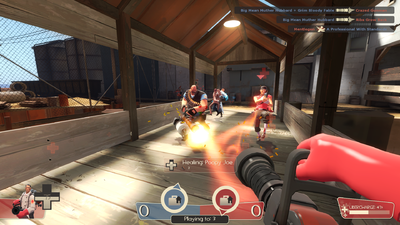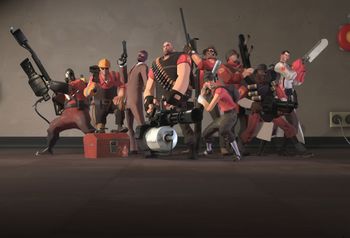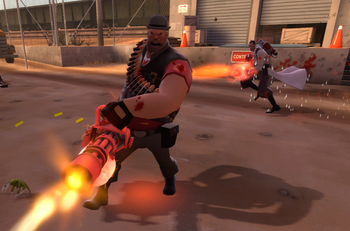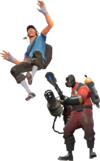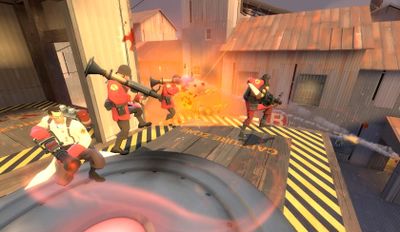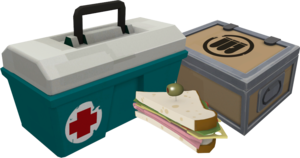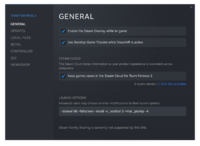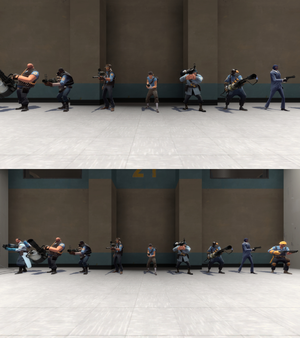遊戲機制
| 這頁目前正處於被翻譯至繁體中文的狀態。 如果你會說繁體中文,請在討論頁中留下你的大名,或透過查看歷史紀錄跟有編輯這頁的用戶聯繫。 |
| “ | 就是這樣,兄弟!
點擊試聽
— 火箭兵對成功任務的示範。
|
” |
絕地要塞二的遊戲機制為所有玩家、各式伺服器與編輯相關內容應守的規則和可行的事物做了規範。了解這些機制可讓玩家們更簡單明瞭遊戲過程並使之更為順暢。
內容
引擎
絕地要塞二是以 Source 引擎的橘盒版本執行,能運行在 PC、 Xbox 360、 PS3,以及 Mac 上。橘盒引擎增加了臉部繪製、粒子效果,以及多核心繪製。絕地要塞 2 的一般遊戲人數為 24 人 (Xbox 360 則是 18 人,PS3 16 人),但是在 PC/Mac 上的伺服器可以一次最多容納 32 位玩家。所有玩家的行動以及選項都會經由主控台指令(又稱 ConVars)來處理。
職業
在絕地要塞二中總共有九種可供玩家扮演的職業。他們的類型分別為「進攻類」、「防守類」以及「支援類」,但這些分類對遊戲進行本身沒有太大的影響。每個職業的能力和狀態會因裝備欄而有所改變。
 偵察兵:進攻型職業,擁有 133.33% 的移動速度和 125 點生命值,是適合打帶跑戰術以及奪取目標物的職業。可以雙重跳躍,而佔領控制點和堆動彈頭車時會已與兩人一樣快的速度來進行。偵察兵的初始裝備是雙管散彈槍、手槍、以及球棒。
偵察兵:進攻型職業,擁有 133.33% 的移動速度和 125 點生命值,是適合打帶跑戰術以及奪取目標物的職業。可以雙重跳躍,而佔領控制點和堆動彈頭車時會已與兩人一樣快的速度來進行。偵察兵的初始裝備是雙管散彈槍、手槍、以及球棒。
 火焰兵:進攻型職業,擁有 100% 的移動速度和 175 點生命值,是屬於近距離作戰跟支援團隊的職業。可以使用火焰噴射器來使敵人著火和使用壓縮氣爆將飛彈以及玩家彈開,並且不會受到餘火的燒傷。火焰兵的初始裝備是火焰噴射器、散彈槍、以及消防斧。
火焰兵:進攻型職業,擁有 100% 的移動速度和 175 點生命值,是屬於近距離作戰跟支援團隊的職業。可以使用火焰噴射器來使敵人著火和使用壓縮氣爆將飛彈以及玩家彈開,並且不會受到餘火的燒傷。火焰兵的初始裝備是火焰噴射器、散彈槍、以及消防斧。
 醫護兵:支援型職業,擁有 106.67% 的移動速度和 150 點生命值,是專門於讓隊友們能夠在戰場上長久存活的角色。會自動回復生命值,也能幫隊友回復生命值以及使用 ÜberCharge 在隊友以及醫護兵身上。醫護兵的初始裝備是注射槍、醫療槍、以及鋸子。
醫護兵:支援型職業,擁有 106.67% 的移動速度和 150 點生命值,是專門於讓隊友們能夠在戰場上長久存活的角色。會自動回復生命值,也能幫隊友回復生命值以及使用 ÜberCharge 在隊友以及醫護兵身上。醫護兵的初始裝備是注射槍、醫療槍、以及鋸子。
 間諜:支援型職業,擁有 100% 的移動速度和 125 點生命值,是干擾和暗殺敵方的理想職業。可以偽裝,摧毀建築,隱形,使用全能大使爆頭,以及背刺。間諜的初始裝備是左輪手槍、電子破壞器、蝴蝶刀、偽裝工具、以及隱形手錶。
間諜:支援型職業,擁有 100% 的移動速度和 125 點生命值,是干擾和暗殺敵方的理想職業。可以偽裝,摧毀建築,隱形,使用全能大使爆頭,以及背刺。間諜的初始裝備是左輪手槍、電子破壞器、蝴蝶刀、偽裝工具、以及隱形手錶。
程式碼裡有平民職業,只是從來沒有正式的加入到任何遊戲模式裡。
戰鬥
戰鬥是兩方不同的隊伍為了目標競爭時所採用的主要手段。絕地要塞二有許多不同種類的戰鬥機制。
傷害
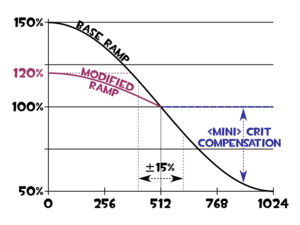
絕大部分的武器都會對生命值造成傷害。除非伺服器有經過修改,否則武器不會對造成友軍傷害,儘管有許多武器會對使用者自身造成傷害。武器的傷害是由許多變數控制的,絕大部分的武器都不會對特定部位造成傷害(狙擊手的爆頭與間諜的背刺為典型的例外)。許多武器所造成的傷害都會與距離的遠近有所差別,例如與敵人越接近就會造成更多傷害,越遠則是越少;但小爆擊則不會被後者所影響,而爆擊所造成的傷害永遠都是一樣的。傷害距離是從攻擊者到被打中的目標來計算的(而不是攻擊者一開始所攻擊的位置)。爆炸攻擊所造成的傷害會因玩家與爆炸中心點的位置遠離而減少。雖然大部分爆炸性武器會使使用者受傷,但火箭兵和爆破兵享有對自己造成的爆炸傷害減免的效果。
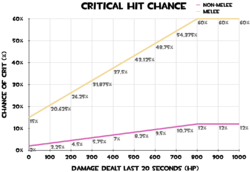
絕大部分的武器都有隨機的傷害修正值(約 15% 左右),而且也會半隨機地變成爆擊。爆擊不會受隨機傷害修正值或距離傷害修正值影響,一定會造成武器基準傷害的 300% 傷害。帶爆擊的攻擊通常會帶有團隊顏色的視覺效果,並且會發出電擊似的音效(特別是爆破性武器的拋體更為明顯)。通常非近戰類武器有 2% 到 12% 的機會打出爆擊,基於近期所造成的傷害還能提升至 15% 到 25% 左右。然而某些武器,如市場花園園丁,無法獲得隨機爆擊。被爆擊擊中時,受害者會被擊退一大段距離,頭上會冒出「Critical Hit!」的字樣,同時發出特別的音效。打出爆擊的玩家本身不會受到自己爆擊的額外傷害和大幅擊退效果,但玩家仍可看到爆擊特效與爆擊命中音效。爆擊不會累加至單次攻擊上(亦即不會出現兩倍爆擊 600% 傷害等情況)。
許多武器和增幅效果可以造成小爆擊。小爆擊的機制與爆擊雷同,但所造成的傷害只有基準傷害的 135% 而已,造成的擊退效果遜於爆擊,也沒有爆擊的視覺與音效效果。此外,雖然爆擊傷害不受距離影響,小爆擊則會受到距離影響所造成的傷害且享有近距離傷害加成。如果一次攻擊同時帶有小爆擊和攻擊,則只會進行爆擊的傷害判定。如同爆擊,發出小爆擊的玩家不會受到自己小爆擊造成的額外傷害。
建築不會受到所有爆擊和小爆擊造成的額外傷害,也不適用距離-傷害衰減變數。同樣地,建築本身造成的傷害也不適用距離-傷害衰減的影響,也不可能造成爆擊,但仍可受到增幅效果等影響打出小爆擊來。
命中判定
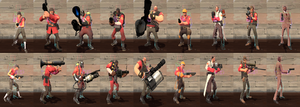
絕大多數的武器分屬「拋體武器(Projectile weapons)」或「即時命中武器(Hitscan weapons)」。
- 拋體武器,像是火箭發射器,會射出可移動的物件,其移動路徑、位置與效果取決於伺服器端的運算,這會使得連線品質較低的玩家獲得較差的效果。每位玩家打出的拋體通常都有獨特的物理效果,但玩家開火時的速度不影響拋體的初速。拋體並非由玩家螢幕正中央射出,而是由武器持用手的該側射出(設定為右撇子的火箭兵的火箭會由螢幕右側射出)。拋體對玩家的命中判定並非依循角色模型命中區,而是一巨大立方體形的命中判定區。此判定區能包住玩家角色的模型,也用於判定玩家與地圖的接觸情形,並非職業本身的職業或狀態,除非角色蹲下。舉例來說,站著的重裝兵的拋體命中判定區和跑動中的偵察兵相同,但與蹲下的偵察兵相異。火焰兵的火焰攻擊為粒子效果,也遵循大部分的拋體武器命中判定機制。
- 即時命中武器,像是格林機槍,攻擊瞬間即判定命中,不像拋體還有可能要等待其移動時間的特性。近戰武器和子彈類/散彈類武器都是使用即時命中判定機制。即時命中武器對命中的判定是基於玩家端的運算(與取決於伺服器端的拋體相反),因此有時會發生匪夷所思的命中情形(「我老早躲到掩體後面了,他怎麼還打得到我?!」)。即時命中武器是由玩家螢幕正中央發射的,儘管視覺效果看起來是從武器持用手側發出的。非近戰類的即時命中武器使用的是根據角色體型描繪的精確命中判定區(站著的重裝兵命中判定區會比站著的偵察兵還大),但近戰武器使用的是和拋體武器相同的巨大命中判定區。
武器類型
每種職業都有能隨意搭配的獨特武器組合,分別佔據武器欄位一、二和三(也常分別稱作主要武器、次要武器、近戰武器)。某些職業擁有額外的欄位可用,像是工程師的 PDA 欄和間諜的偽裝工具。玩家所選擇的武器便成了他們的裝備。
多數非近戰武器都需要消耗彈藥。使用彈藥的武器分成備用彈藥型(Reserve-based,通常有著有限的彈匣,並需要從備用彈藥進行裝填彈藥的動作,如手槍)和一次性上彈型(Fully-loaded,能夠直接使用彈倉裡的彈藥且不須裝填,如格林機槍)。備用彈藥型武器又可以分成彈匣上彈型(一次裝填動畫後就可完全填滿彈倉,如左輪手槍)或連續上彈型(一次從備用彈藥中裝填一顆到彈倉中,如散彈槍)。再裝填的動作可藉由按下攻擊鍵或更換武器來打斷,但尚未完成的換彈動作所花的時間就浪費掉了。為連續上彈型武器裝彈時,所裝填的第一顆彈藥與接下來所裝填的彈藥所用的動畫不同(舉例來說,彈匣完全打空的榴彈發射器要花 1.24 秒裝填第一顆彈藥,而接下來的裝填都只花 0.6 秒而已)。
許多不須使用彈藥的武器則是以充能進行裝填(如瓶手道)。充能通常可藉由等待一段固定的時間、使用補給櫃、或重生後填滿。某些沒有彈藥的武器則需要用較特別的方式手動為之填充,例如醫療槍(藉由醫療隊友填充 ÜberCharge 量表)和增幅旗幟。
角色狀態
角色狀態包含了許多牽涉到武器的玩家狀態,如著火和流血。所有的角色狀態都會在玩家死亡或更換職業時移除,而無敵 ÜberCharge 也可以解除並無效化絕大部分的負面狀態。
正面效果/增幅效果
- ÜberCharge:受 ÜberCharge 效果影響中的玩家可對所有形式的傷害免疫,除了環境因素致死或傳送殺敵以外。受 ÜberCharge 的玩家身上會有著帶團隊顏色的亮光與發光的雙眼。受醫療槍 ÜberCharge、從 Eyeaduct 的地底世界或 Ghost Fort的骷髏島逃脫、以及在變成炸彈的情況下擊昏梅拉斯莫斯都可以獲得 ÜberCharge。
- 超速治療(Megaheal):受此效果影響的玩家可對妨害移動的效果免疫(如擊退、擊暈、緩速等效果),並可每秒回復 100.8 到 302.4 點(端看玩家距離最後一次受到傷害多少時間而定)或快速治療者三倍治療速率的生命值。受超速治療的玩家腳下有著團隊顏色的光環,和增幅旗幟的情況類似。僅可由快速治療者的 ÜberCharge 獲得。
- 爆擊加成:受到爆擊加成的玩家所做的所有攻擊都帶有爆擊。處於爆擊加成狀態下的玩家所持的武器都會帶有團隊顏色的光芒及電流。可藉由爆擊製造者、殺人拳套、邊疆正義、鑽紋響尾蛇、衝擊刺盾、輝煌戰盾、燃素噴射器、湮滅者卡賓槍都有著能發動爆擊加成的能力;此外還可以藉由奪得情報、在競技場模式中達成首殺、在萬聖節期間收集萬聖節南瓜、從 Eyeaduct 的地底世界或 Ghost Fort 的骷髏島脫逃、或於回合結束後的屠殺時間處於勝隊等方式獲得爆擊加成。要牛命 5000無法造成爆擊,即使是處於爆擊加成狀態下也一樣。
- 小爆擊加成:受到小爆擊加成的玩家所做的所有攻擊都會帶有小爆擊。處於小爆擊狀態下的武器都會帶有偏黃團隊顏色的光芒與電流(藍隊是藍綠色,紅隊是橘黃色)。可藉由汽水槍手、爆擊可樂、增幅旗幟、衝擊刺盾、輝煌戰盾和水牛排三明治獲得小爆擊加成。
- 超量治療:受到超量治療的玩家生命值會超過 100%(上限為 150%)。受到超量治療的玩家身上會持續放射出帶團隊顏色的醫療符號粒子。可藉由醫療槍、爆擊製造者、疫苗接種者、魔眼闊劍、強力千斤頂、連馬都沒有的無頭騎士斬首斧、陰謀苦無、美味巧克力、太空魚酥餅、尼斯九號鐵桿以及從 Eyeaduct 的地底世界逃脫獲得超量治療。
- 迴避:迴避效果能免除任何敵方武器對玩家造成的傷害,但不影響連帶的擊退效果或負面效果。處於迴避狀態的玩家移動時會製造殘像,而敵方攻擊命中時會出現「MISS!」的字樣。唯一能夠發動迴避狀態的手段只有飲用 Bonk! 原子能量飲料而已。
- 移動速度加成:處於移動速度加成效果中的玩家移動速度可加快 40%(加成後速度上限為基本移動速度的 150%)。受移動速度加成的玩家身邊會有速度線特效。受到紀律行動的效果,以及從 Eyeaduct 的地底世界或 Ghost Fort 的骷髏島逃脫都可獲得移動速度加成。
- 傷害減免:處於傷害減免效果中的玩家被爆擊或小爆擊時擊中時,可以減少被擊退的距離,並對爆擊或小爆擊造成的額外傷害免疫,同時受到的所有武器傷害都有 35% 的傷害減免。受此效果加成的玩家腳下會有光環(與增幅旗幟共用的特效)。傷害減免效果僅可由營隊後援發動。
負面效果/負面狀態
- 著火:著火的玩家會隨著時間經過持續受到傷害(即餘火)。火焰兵對著火狀態免疫。大多數能造成著火的傷害來源每半秒都會造成 3 點生命值的損傷,持續十秒,共可造成 60 點的傷害(除油者每秒僅造成 2 點傷害,總傷害為 40 點)。火焰噴射器、背後火焰噴射器、除油者、燃素噴射氣、彩虹放射器、點燃的箭矢、信號槍、爆破信號槍、要人命死光槍、灼熱信號槍、熔岩巨斧、龍火重機槍和要牛命 5000 的蓄力攻擊都可以造成著火狀態。
- 流血:流血的玩家會隨時間經過受到傷害。流血持續的時間取決於造成流血效果的來源(五秒或六秒),每半秒可造成 3 到 5 點的傷害。南方盛情、部落戰刀、波士頓狼牙棒、盧恩古刃、斷頭血刃和包裝紙殺手所丟出的彩球都能造成流血效果。
- 緩速:某些武器可以在命中敵人時同時減緩其移動速度,程度不定。只有娜塔莎可以造成緩速效果。
- 瓶手道:所有對被瓶手道擊中的玩家的攻擊都會變成小爆擊。受瓶手道擊中的玩家身上會變成泛黃色調,且會有黃色水滴的粒子效果,同時也會令隱形的間諜現形。瓶手道和雪梨沉睡者都可造成此效果。
- 牛奶:對被牛奶潑到的玩家攻擊所造成的傷害的 60% 會回復到攻擊者的生命值上(無法超量治療)。被牛奶潑到的玩家身上會有白色水滴粒子效果,同時也會令隱形的間諜無所遁形。只有瘋狂牛奶可造成此效果。
- 繳械狀態:處於繳械狀態的玩家移動速度會降低 10%,蹲下時無法移動,且無法開火或更換武器(不過還是可以進行嘲諷)。受到繳械的玩家可以清楚地從攝影機視角變成第三人稱與角色動作的不同(各職業不盡相同,但外表看起來都像是害怕或失望)。被睡魔的棒球擊中、於屠殺時間中處於敗方、撞到鬼魂、以及被連馬都沒有的無頭騎士嘲諷命中時都會進入繳械狀態。
- 暈眩:處於暈眩狀態下的玩家被定在原地無法進行任何動作。此時會進入第三人稱視角,可以看到角色站在原地輕微晃動,且頭上會出現旋轉的星星。被飛越極長距離的睡魔棒球擊中,或是被器官粉碎機、弓箭串刺、脊椎穿刺等嘲諷的第一擊命中時都會造成暈眩效果。後者(三種嘲諷)的暈眩效果還能夠影響任何處於 ÜberCharge 狀態的敵人或處於迴避狀態下的敵方偵察兵身上,無視他們的無敵狀態。
- 死亡標記:對受到死亡標記的玩家的攻擊都會變成小爆擊。處於死亡標記狀態的玩家頭上會有個白色骷髏頭和交叉骨頭的圖案。偵察兵的鐵軍扇命中敵人時會將之烙上持續十五秒的死亡標記,但一次只能標記一個人。使用狂奔拳套的重裝兵會一直處於死亡標記狀態,換武器後會持續三秒的死亡標記狀態。裝備遊騎兵援隊的工程師在搬運建築時會持續受到死亡標記(無論距離建築多遠時搬起),在建築放下後死亡標記還會持續數秒才解除。
- 榮譽之縛:當玩家取出帶有榮譽之縛效果的武器時,玩家將無法更換武器,除非成功以該武器殺敵、死亡、或碰觸補給櫃才能更換武器。半盲劍俠是目前唯一擁有榮譽之縛效果的武器。
擊退
大部分的武器都能製造某種程度的擊退效果,但有部分的擊退效果小到難以察覺。擊退的攻擊修正值包括傷害、爆擊或小爆擊狀態、以及依武器而異的效果。擊退效果可以用來令玩家快速移動到特定位置或方向,特別是用以半空制敵,和利用爆炸力進行火箭跳或黏彈跳。部分武器和能力,像是自然之力和壓縮氣爆,有著較為獨特的擊退機制。ÜberCharge 中的玩家所受到的擊退效果與一般狀態的玩家比起來會減弱;偽裝成敵方的間諜可對壓縮氣爆外的擊退效果免疫,而受到超速治療(Megaheal)的玩家則可對所有形式的擊退免疫。
環境
依據地圖和伺服器設定的不同,TF2 遊戲的目標與規則可能會大異其趣。藉由了解遊戲過程的可能變數(以及如何在伺服器瀏覽器中解析它們),玩家就能夠找到適合自己的遊戲環境,並能對自己隊上做出最大程度的貢獻。
任務目標
Maps are made based on a variety of game modes, which are used to determine the objectives for both teams. Teams may compete over the same goals (such as in Push Control Point and King of the Hill maps) or oppose each other in an offense vs. defense setup (such as in Attack/Defend Control Point and standard Payload maps).
Many game modes use control points. Control points begin to be captured when a player of a team not owning the point stands on the point. The capture time varies by map, and its speed is increased when more players stand on it (though each player beyond the first provides diminishing returns). Capture is halted when an opposing team member stands on it in defense, and capture progress is gradually undone when no capturing team mates stand on the point. Control points cannot be captured while "locked", and locked points are usually unlocked after preceding points are captured. Payload carts are pushed and halted the same way control points are captured, though instead of capturing a Payload cart, the pushing team tries to bring it to a checkpoint. Übercharged players cannot capture points or push carts, though they can defend them.
In all official maps with offense vs. defense game modes, BLU plays offense while RED plays defense. In such maps, BLU tends to have faster respawn times, but RED is given a setup time to prepare a robust defense.
- Arena: Players spawn only at the beginning of the round, with no respawning. After a set time, a neutral control point unlocks, which can be captured to win the round. If all members of a team die, that team loses the round. Has first blood and automated team assignment/shuffling by default. Official arena maps don't have resupply cabinets.
- Capture the Flag (CTF): Teams work to capture the opposing side's Intelligence faster than their opponents do the same. Any player can pick up an enemy's Intelligence, and their team gains a point if that player returns the enemy's Intelligence to their team's own original Intelligence spot. The Intelligence drops on command or when its carrier dies; it is returned to its original location if it remains on the ground for a set time after being dropped.
- Control Point, Push (CP): Each team starts with two locked control points and fight for the middle, neutral control point. From then on, at any given time, each team's furthest control point is unlocked, while all others are locked. Teams must capture all five control points to win the round.
- Control Point, Attack/Defend (CP): If the offensive team captures all of the defense's control points before time runs out, they win (if defense can prevent this, they win). In most maps, only one or two control points are unlocked at a time (the notable exception being Steel).
- King of the Hill (KOTH): Each team has their own countdown timer, and a team wins when their countdown timer reaches zero. A team's timer counts down while they own the control point, but is frozen while that team does not have ownership of the control point. Note that a team's timer will still count down even if there are enemies trying to capture the point.
- Mann vs. Machine (MVM): A team composed of up to six human players must fend off waves of AI-controlled robots, stopping them from deliver a bomb to the map's stronghold. Players are able to collect cash from destroyed robots and buy upgrades between waves. Offense wins if successfully deliver the bomb, while defense wins by successfully ward off all the waves.
- Payload (PL): Offense pushes the Payload cart in a manner similar to capturing a control point, trying to reach checkpoints instead of finishing point captures. The Payload cart supports allies as if it were a level 1 Dispenser. Offense wins if the cart reaches the final checkpoint, while defense wins by making sure the cart doesn't reach the final point.
- Payload Race (PLR): Essentially identical to Payload, but instead of offense vs. defense, each team pushes their own cart in an attempt to reach the finish before the opposing team does.
- Special Delivery (SD): CTF-streetball, an initially neutral briefcase of Australium must be transported to Poopy Joe's rocket before the opposing team can do the same.
- Territorial Control (TC): Each team is randomly assigned territories, and rounds consist of each team trying to contest one of their opponent's control points (while the opposing team tries to capture one of theirs). Most of the map is locked during gameplay, consisting of only one territory vs. one territory. After enough successive wins, a round takes place at the losing side's base point, which they must defend against the offense-only opposing team.
- Training Mode (TR): Training maps are for practicing skills against obstacles and/or bots and learning through tutorials. They are often played with only one human player, or at the very least, no opposing human sides.
Map elements
Players start the round in their team's respawn room, where they can change class and loadout instantly. Most respawn rooms contain resupply cabinets, which fully restore health, restock weapon ammo, refill most item meters, and remove most negative status effects, though a similar effect can be achieved by class switching. Upon dying, a player waits to respawn in a respawn wave, which typically come at ten- or five-second intervals, but do vary by map, team color and size, objective status, and server settings. After this wait they appear at their team's furthest forward respawn room. Respawn rooms can be earned by capturing points or pushing Payload carts to checkpoints, and can be lost if the opposing team makes such progress themselves.
Many maps make use of doors. Although their visuals suggest otherwise, doors are handled by the server as being either completely open or completely shut, alternating between the two instantly. Most doors are opened whenever a player stands near them. However, some doors will only open to players coming from a certain side or players on a certain team, most notably respawn room doors. Some doors remain locked until certain conditions are met, such as control points being captured or Payload cart checkpoints being reached.
The boundaries and surfaces of maps are not determined by visual elements, but invisible surfaces that determine where players and projectiles can go. All maps--even outdoor ones--have player ceilings and walls, though they may be invisible, and projectiles may even appear to go through them. Additionally, many surfaces and objects in the game that appear to take physical space are completely ignored for collision detection, with players and projectiles passing through them as if nonexistent; these surfaces can be used for hiding Stickybombs or spamming targets from cover.
Maps usually have pickups placed in various locations. Map-specific health and ammo pickups will remain in place until grabbed, respawning after a ten-second delay. The map health pickups restore 20.5%, 50%, or 100% health based on size (pill bottle, first aid tin, and ice cooler, respectively); similarly, the map ammo pickups restore 20.5%, 50%, or 100% ammo and 41, 100, or 200 metal based on size (small grey metal box, medium beige metal box, and large wood crate, respectively). When players die, they usually drop weapons that can be picked up for 50% ammo and 100 metal (unless the dropped item was an Engineer toolbox, which drops 100% ammo and 200 metal); destroyed buildings also leave behind metal debris, which can be picked up for ammo and metal. A Heavy who dies with a Sandvich, Dalokohs Bar, Fishcake, or Buffalo Steak Sandvich active will instead drop that, which can be picked up for 50 health points (75 for Scouts).
Server settings
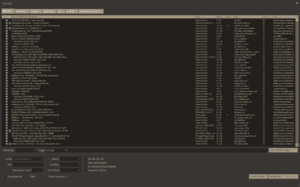
Server settings can have a strong impact on gameplay in terms of performance and game balance. Players can select what kind of server on which they want to play using the Server Browser, filtering based on tags (which include game modes and changes to respawn times), player count, map, latency, and the like. Generally, servers closer to the player's location will have reduced latency, resulting in faster connection and more accurate hit detection. Game smoothness is also affected by the server's hardware and networking settings, especially at higher player counts or when running some mods.
Servers can run scripts and configs just as a player can, with commands from clients issued by rcon. For more unique functionality, there are numerous server plugins to modify gameplay or provide administrative or stat assistance, the most common being SourceMod and HLStatsX. Instead of running plugins, servers can use logs to interact with third-party match-making programs, such as TF2 Lobbies, which let them see stats out-of-game.
There are a variety of server settings that can change gameplay without running plugins or external programs. These include:
- Respawn times: Respawn times can be changed to either be shorter or effectively removed entirely. These can cause fluctuations in map and class balance, though combat is more steadily provided.
- Damage settings: Servers can disable random Critical hits, random damage spread, and random pellet spread with ConVars. This is most commonly done on competitive servers and those that frequently play arena maps.
- Max players: While TF2 was originally designed for 24 players or fewer, servers can raise the limit to 32 at the cost of performance. This can cause in increase of spam that slows objective progress, but ensures a greater amount of combat in the map.
- Objective specifics: Map objectives can be specified from the server. For example, the CTF game mode can be played to a certain capture count, to a certain time limit, or both. Related options include disabling Crit boosts from First blood or Intelligence capture, changing the map time limit, and using a win difference mercy rule.
- Pure: The sv_pure ConVar dictates what kinds of custom files are allowed on the server. When set to 0, clients can use any custom content they wish. When set to 1, clients are allowed to use any files on the server's whitelist. When set to 2, clients may not use any custom content besides those specifically allowed by Valve.
- SourceTV: Servers can enable SourceTV to allow a large number of spectators to watch the game without risking interference. SourceTV acts like an observer player, taking up a server slot while not playing on either team. Unlike players, SourceTV broadcasts its spectator view from the server's IP address (using a different port).
- Special modes: There are server modes that can be applied to any map regardless of game mode, including highlander and tournament modes. These are more commonly reserved for private events and competitions.
Other common rule areas that vary by server include team size/balance rules, alltalk (cross-team) voice chat, and ping limits.
Configuration
There are a variety of ways to configure the Team Fortress 2 client. The choices players make in setting up TF2 can have impacts on game interaction, performance, and presentation. Most of these methods of customization are not available on console versions of the game, save main menu options.
Program setup
Some aspects of a player's machine, operating system, and Steam settings can affect TF2, and after a long history of updates, Team Fortress 2 has required an increasing amount of system resources to play at optimum frame rates. Additionally, some program features enabled by default may be undesirable for certain players, either due to performance issues or personal preference.
Steam, by default, enables both Steam Cloud synchronization and the Steam Community In-Game Overlay, which can be changed under Steam Settings. Within Steam's interface, players can also change launch options. As the name suggests, launch options are TF2 settings that are applied when the game is launched. Launch options can be accessed by opening the Properties of Team Fortress 2 in the Steam Library and clicking "Set Launch Options...". Launch options are separated by spaces and start with either a dash (if the command is not accessible through console commands]) or a plus sign (if the command is a console command). Launch options can be used to achieve a variety of effects, including...
- Smooth Alt+Tabbing: Players who wish to view other windows and programs while running TF2 can run it in windowed mode with no border. This can be reversed with the full-screen launch option (-full). Example (for 1440x900 resolution): -window -noborder -w 1440 -h 900
- DirectX Level: Due to performance or personal preference, running TF2 in a low DirectX level may be ideal. Example (for DirectX 8.1): -dxlevel 81
- Disabling Extraneous Features: Memory usage and performance drops can be minimized by disabling unused features. Example: -novid -nojoy -noipx -nocrashdialog
In addition to the Steam options, launch options can be specified for individual shortcuts to Team Fortress 2 by adding them to the file "C:\Program Files\Steam\Steam.exe" -applaunch 440 as a shortcut target. For example, this shortcut target would run TF2 full-screen with no intro video:
"C:\Program Files\Steam\Steam.exe" -applaunch 440 -full -novid
Video card and sound card configuration tools can be used to override game settings. For example, some video card utilities can change mat_picmip to values outside the normally-allowed bounds in Team Fortress 2, though this can be considered cheating.
Team Fortress 2 can be subject to operating system influences on mouse control. While this can be mitigated through launch options and registry edits, the easiest method to override this is by enabling Raw input (m_rawinput 1).
Customization
The most straightforward way for a player to customize their TF2 experience is the in-game options panels. In essence, the options panels are user-friendly ways to set ConVars, which can otherwise by set manually using the developer console. These panels are...
- Keyboard: Allows for simple key binding (can be done in command console with bind "KEY" "COMMAND"). The advanced options allow for fast weapon switching (change slots without confirming with the attack key) and enabling developer console (an important option for anyone using console commands).
- Mouse: Contains options for mouse and gamepad control. The "Raw input" option gives users more reliable mouse aiming by bypassing operating system mouse settings.
- Audio: Has a variety of sound-related options. Closed captions do not work without custom files.
- Video: Allows for some control of display settings, though some settings found in launch options and FPS configs are missing or disabled. The advanced video options panel has the field of view (fov) slider, which can be increased to grant the player wider vision in-game.
- Voice: Has simple controls for in-game voice chat.
- Multiplayer options: Contains a great variety of gameplay-related options (mostly in advanced options) and content download control.
These settings are stored as ConVars in config.cfg, found in the cfg folder (which is usually found in C:\Program Files\Steam\steamapps\STEAMLOGIN\team fortress 2\tf\). By default, config.cfg is saved to the Steam Cloud.
In addition to the menu panels, ConVars can be changed with more specificity using scripting. Scripting allows for more advanced and uniquely tailored controls, dynamic player settings, and more optimized performance (performance scripts are usually just called "configs"). Script files are located in the cfg folder (usually found in C:\Program Files\Steam\steamapps\STEAMLOGIN\team fortress 2\). The file autoexec.cfg runs on game startup, and the class-named files (such as scout.cfg) each run when first spawning as the appropriate class. Most scripts are made using bind, alias, game commands, and/or ConVars; the wait command may be used to produce automated, chronologically sequenced functions, though a number of servers disable this with sv_allow_wait_command 0.
Many aspects of the TF2 interface can be customized by editing the Heads-up display, or "HUD". Most custom HUDs always work regardless of server settings, unless the HUD uses customized material files, which constitute custom content and are disabled by sv_pure servers (most HUDs only contain /resource/ and /scripts/ files, which are allowed in all pure settings).
Tools
There are a variety of first-party (some in-game and some not) and third-party tools to assist in playing, editing, and analyzing Team Fortress 2. These include:
- Demo Recording and Playback: Players can record demos of gameplay (record FILENAME in console) to watch or share later without using the resources necessary for live video capturing. Demos can be played with the console command playdemo FILENAME and captured to video using the startmovie command. PREC is a common, Valve-approved add-on to TF2 that automates demo recording.
- TF2 Tool Mode: TF2 can be run under a "tool mode" with the launch option -tools. The tool mode allows access to the Commentary editor, Material editor, and perhaps most notably, the Particle editor.
- Source SDK: The Source Engine Software Development Kit, or SDK, is a set of programs that come with all Source engine games and run through Steam, including the Model Viewer (commonly used for posing wiki images) and Hammer editor (used for making maps). The SDK can be accessed in the Tools subsection of the Steam Library, and has its own wiki.
- GCFScape: One can examine and extract the contents of TF2 using GCFScape, a third-party application used by most custom content editors. GCFScape can also be used to validate or defragment game files. In order to view and edit VTF files extracted using GCFScape, VTFEdit is commonly used.
These tools, in addition to modeling and sound editing software, can be used to edit a variety of TF2 gameplay elements, though their actual presence in-game is based on server settings (most notably with the sv_pure command and file whitelists).
User-made content can be submitted to Valve through the Steam Workshop. Content deemed worthy of inclusion becomes official game content, with the author credited and rewarded for their contribution.
See also
External links
